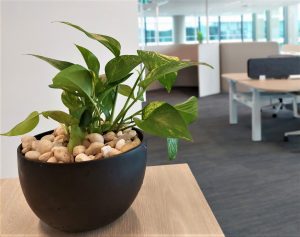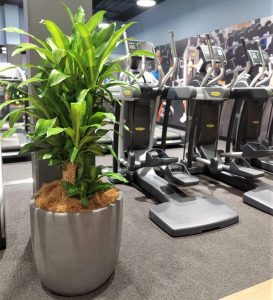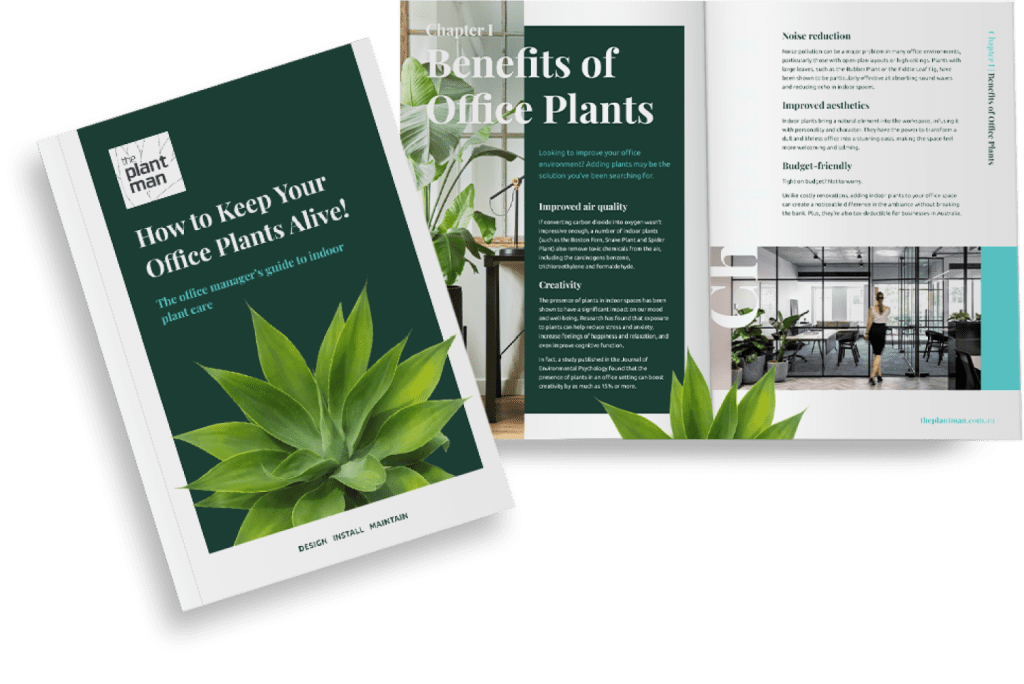Indoor plants are a fantastic way to brighten up any office space, but they can get dusty too which is why we need to show them a bit of love by regularly cleaning the leaves on our plants. From gorgeous living green walls to stylish planters to ornamental outdoor plants, plants can breathe life and vivacity into every space of a business premises or office, inside and out. The biggest difference is that outside, nature takes good care of plants by offering them just the right amount of water and sunlight they need to live and grow. When we bring plants inside, watering and getting the right amount of sunlight then becomes our responsibility. We need to do this by fulfilling all of nature’s many roles – providing our plants with sunlight, mineral-filled soil and, of course, rain. In the way that all natural things serve many purposes, rain water does more than just hydrate plants – it also serves as their ‘shower’. Therefore, when we bring a plant inside it’s not just our duty to make sure it gets a good drink, we really ought to clean the plant leaves as well.
Related article: Hypoallergenic Plants

Why Cleaning Indoor Plant Leaves Is Important

Just as you dust and sweep around your desk and floors, you should also add plant leaf cleaning to your ‘to do’ list. In the same way that ornaments in your home get dusty, particles from dust, dirt, and even germs can land on the leaves of your plants. Leaf cleaning as part of your office plant maintenance is imperative, because cleaning:
- Improves air quality: Dust inhibits a plant’s ability to effectively filter pollutants in the air, so cleaning will help plants to keep purifying the air for a cleaner and healthier environment.
- Keeps the space looking great: Dust can make leaves appear dull and lifeless. Regular cleaning will restore the glorious shine of a plant and bring out its natural beauty.
- Ensures plants stay happy and healthy: Dust and dirt acts like a tiny blanket, blocking your plant from taking in sunlight and preventing the process of photosynthesis (how your plant feeds itself). Dusty leaves can also result in added stress on your plants slowing their growth, so it’s important to regularly clean them to ensure they stay healthy.
- Is a great time to conduct a plant health-check: Cleaning indoor plants regularly gives you the opportunity to conduct a full health-check on your green friend! As you are cleaning, take note of any yellow or brown spots, wilting leaves and the soil composition. If there seems to be a problem, you can get onto it before it’s too late.
- Will keep bugs at bay: A dusty or dirty plant can attract unwanted insects. Regular cleaning will not only help to prevent an infestation; a thriving, clean and healthy plant will naturally be more resilient.
- It’s good for your wellbeing: For many people, caring for their plants can be a therapeutic and soothing experience – so what have you got to lose!
Just How Do You Clean Plant Leaves?

Depending on the type of indoor plant you have, how you clean the dust off the leaves will be different. For example:
- Hardy plants like fiddle leaf figs can be cleaned using a damp cloth, just make
sure you only use plain water and avoid any chemicals or detergents. - More delicate indoor plants such as maidenhair ferns will need to be cleaned using a soft duster. Spritz lightly with water afterwards to remove the residue.
- Indoor plants with fuzzy leaves like African Violets require a soft brush – a paintbrush or makeup brush usually works. Avoid using water as it can cause the dirt to clump.
How Often Should I Clean Plant Leaves?

Your schedule for cleaning plant leaves may vary depending on your office space and how quickly dirt and dust accumulates, as well as the airflow and general foot traffic. We recommend starting with a light dusting once a week and regularly checking on your plants to see if more frequent or thorough plant leaf cleaning is needed. Remember, keeping your plant leaves clean will not only look after the health of the plant, it’s important for the health of people who may suffer from allergies.
5 Helpful Tips For Cleaning Indoor Plant Leaves
1) Avoid harsh chemicals:
While plants are wonderful at removing a lot of pollutants from the air, it also means that they can easily absorb a wide range of chemicals and harmful toxins – especially in enclosed spaces with very little airflow. These will cause harm to the plants (called phytotoxicity), and symptoms include spots or blotches, speckling, browning or yellowing, tip burn, cupping or twisting of the leaves, stunted growth, or they could kill the plant entirely.
2) Clean plants naturally:
Water is one of the best ways to clean your indoor plants, while also giving them something to drink. Although you do have some other natural options available. A leaf shine spray made with neem oil is ideal. Neem oil is not only useful for cleaning, it will kill many disease-causing insects and it can stop some fungal diseases as well. For plants with a build up of dirt, simply wash with diluted (environmentally friendly) washing liquid and warm water.
3) Be gentle:
You should aim to use non-abrasive materials when cleaning leaves on plants, such as a microfibre cloth with water to wipe away dirt or a feather duster. For very delicate plants that typically don’t like to be cleaned with water, simply use a soft brush and be careful not to break its leaves.
4) Use optimal watering techniques: For small or delicate plants such as succulents, cacti or bonsais, use a spray bottle with a mister setting to clean. Medium to larger plants with sturdy leaves can be cleaned under a running tap or hose.
5) Use cleaning as a time to tidy:
While cleaning your plants don’t forget to wipe the undersides, take the opportunity to prune away any dead leaves, ensure the plants are properly watered and have adequate sunlight, and tidy or clean the pot as well.
To see how The Plant Man can help brighten up your office space with superior plant leaf cleaning and maintenance, get in touch with our team today.











